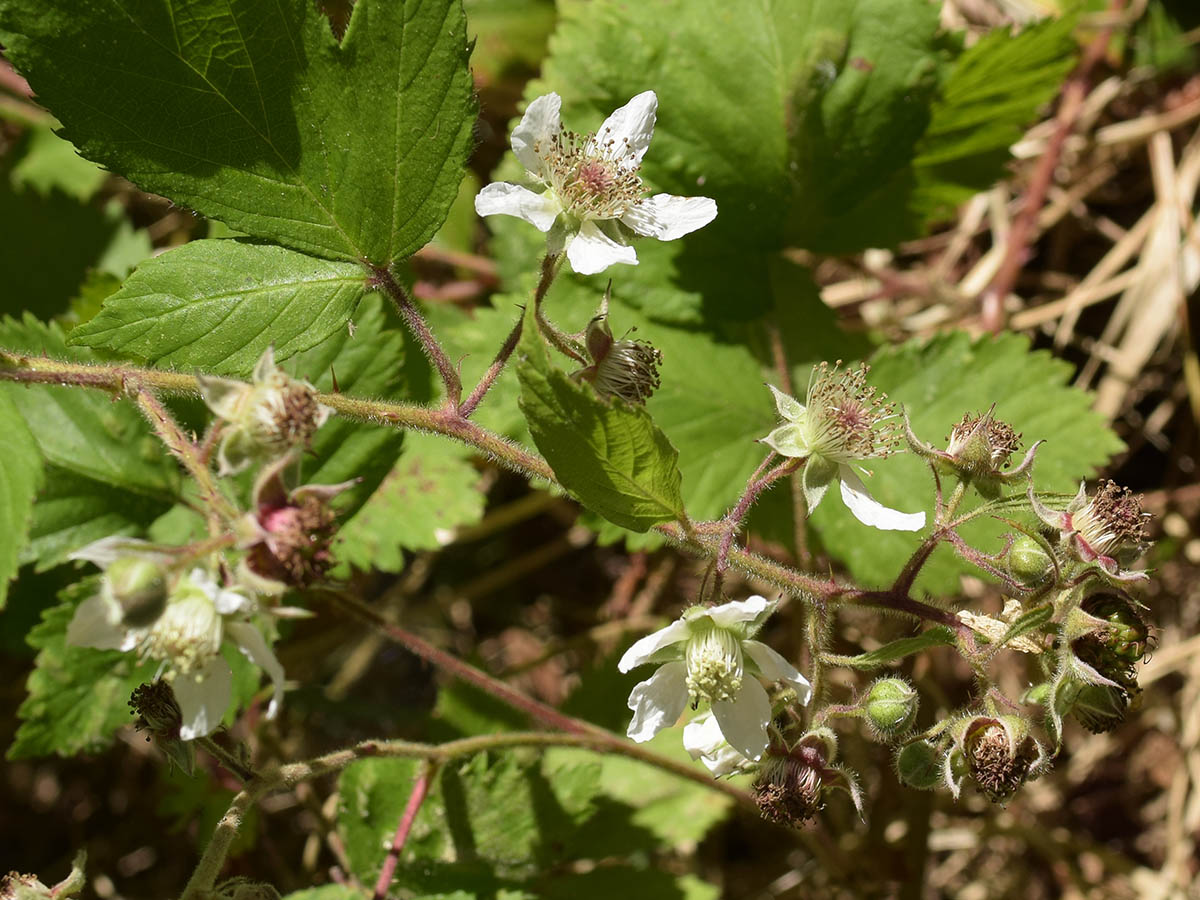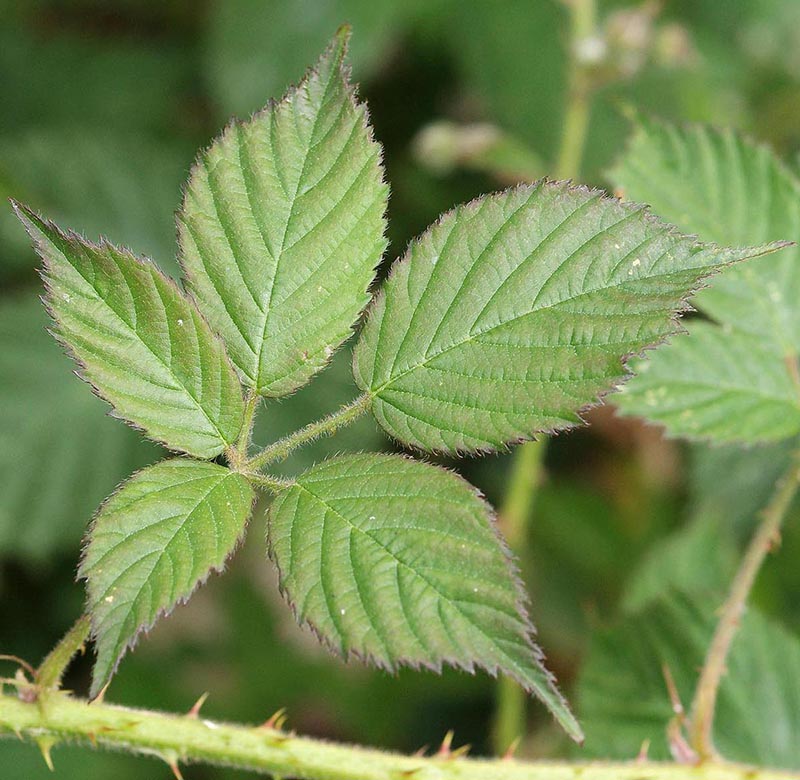
Rubus insectifolius – Series Radulae
back to Alphabetical index · Taxonomic index
This species is locally frequent over the southern half of England, occurring in acid woodland and on heathland. It is one of several glandular species that have white petals with red styles, but the most distinctive feature is the shape of the upper part of the leaflets which gradually narrows to a long, acuminate apex. The inflorescence is long and narrow.


As is fairly typical of the Radulae the stamens in this species are relatively short, so do not obscure the styles, making the wine-red colour clearly visible.


In addition to the attenuated apex, leaflets can also be quite deeply and sharply toothed (dissected
), often more so than in the photos below. Note also the bronzy tinge, which seems to be quite common in this species. The leaves are softly pubescent above – just visible in some of the photos.




Mature leaflets are sparsely hairy on the veins and green below (such leaflets are described as hard below
by Edees & Newton).

Stems are often quite slender and can trail over the ground or up through other vegetation. They have frequent, fairly slender main prickles on the angles and sometimes short acicles and pricklets on the faces. The photos below show the distinctively pubescent stem with abundant red-tipped glands, which characteristically for the Radulae are fairly short, roughly similar in length and often hidden amongst the hairs.


